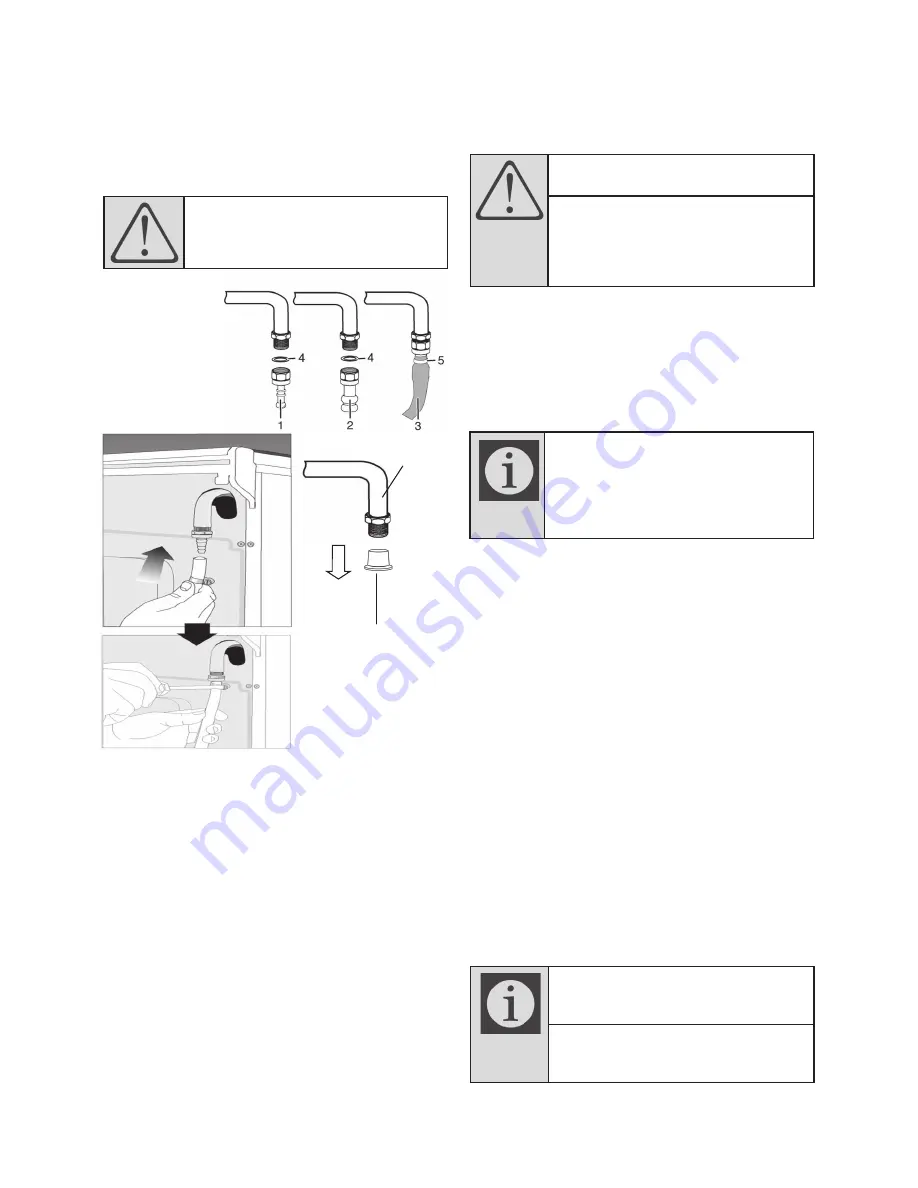
Page 13
x
Secure the hose by tightening the hose clamp.
x
Repeat the same procedure for the other end of
the hose by securing it to the regulator on the gas
bottle to complete the gas cylinder connection.
x
Always check for gas leaks after installation and
whenever a new or refilled gas bottle is used for
the first time.
DANGER Risk of explosion and suf-
focation!
LPG bottles must not be
stored in the house.
x
If this occurs, close the gas bottle valve .
x
Check and tighten the connections immediately.
x
Repeat the procedure to ensure that there are no
further leaks.
Check the general appearance of your
appliance for any damages that might
have occurred during transportation.
Do not place other items on the top of
the appliance. The appliance must be
transported upright.
x
Push the appliance towards the kitchen wall.
Package information
Packaging materials are dangerous to children. Keep
packaging materials in a safe place out of reach of
children.
Packaging materials of the appliance are
manufactured from recyclable materials.
Do not dispose of the packaging materials together
with domestic or other wastes. Dispose of them in a
responsible manner.
Future Transportation
Keep the appliances original carton and transport the
appliance in it. Follow the instructions on the carton. If
you do not have the original carton, pack the
appliance in bubble wrap or thick cardboard and tape
it securely.
To prevent the wire grill and tray inside the oven from
damaging the oven door, place a strip of cardboard
onto the inside of the oven door that lines up with the
position of the trays. Tape the oven door to the side
walls.
Secure the caps and pan supports with adhesive
tape.
Do not use the door or handle to lift or move the
appliance.
Caution:
Never use a naked flame to
check for gas leaks.
DANGER Risk of explosion by
damage of the safety tube!
The safety tube must not be clamped,
bent or trapped or come into contact
with hot parts of the appliance.
Final check
1. Open gas supply.
2. Check gas installations for secure fitting and tight-
ness.
3. Ignite burners and check appearance of the flame.
The flames should be blue and burn
smoothly. If the flames appear
yellowish, check that the burner cap is
seated correctly or clean the burner.
Switch off the gas and let burner cool
before touching it.
1.
Hose tip-LPG
2.
Hose tip-NG
3.
Safety hose
4.
O-ring (gasket)
5.
Clamp
Manifold
protection
plug
Manifold protector plug removal:
The manifold protection plug is inserted into the
manifold at factory level in order to protect the
manifold from being contaminated with debris. The
manifold protection plug must be removed when the
product is installed by the gas installer.
The red manifold protection plug can be removed
from the manifold by grabbing it with your fingers or if
necessary with the aid of a small pair of pliers.
Manifold
Leakage control at the connection point
x
Ensure that the control knobs on the control panel
are in the OFF position.
x
Open the valve on the Gas bottle.
x
Using a small paint brush, apply some soapy
water to all the connections.
x
If there is a leak, bubbles will appear.
x
If this occurs, close the gas bottle valve .






































